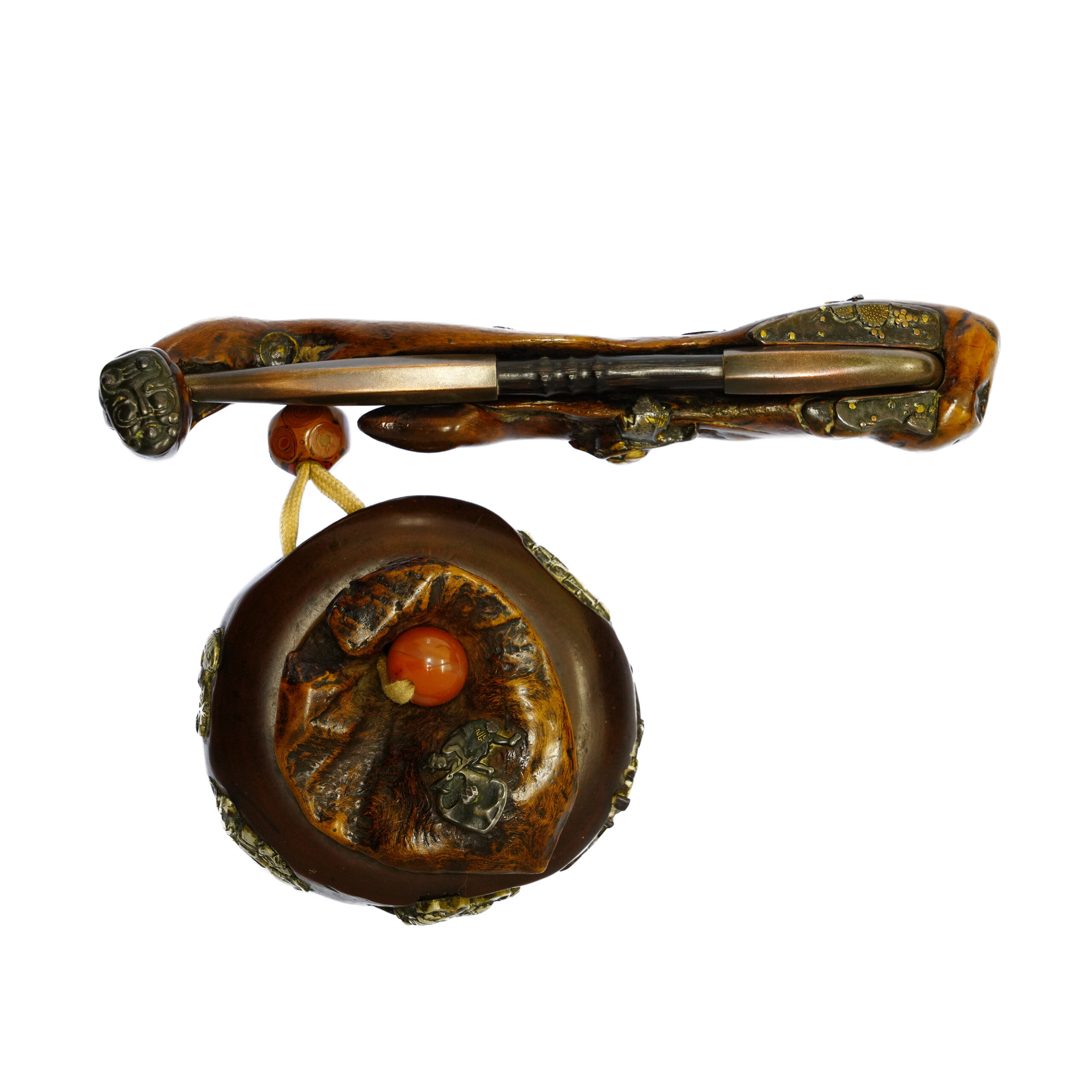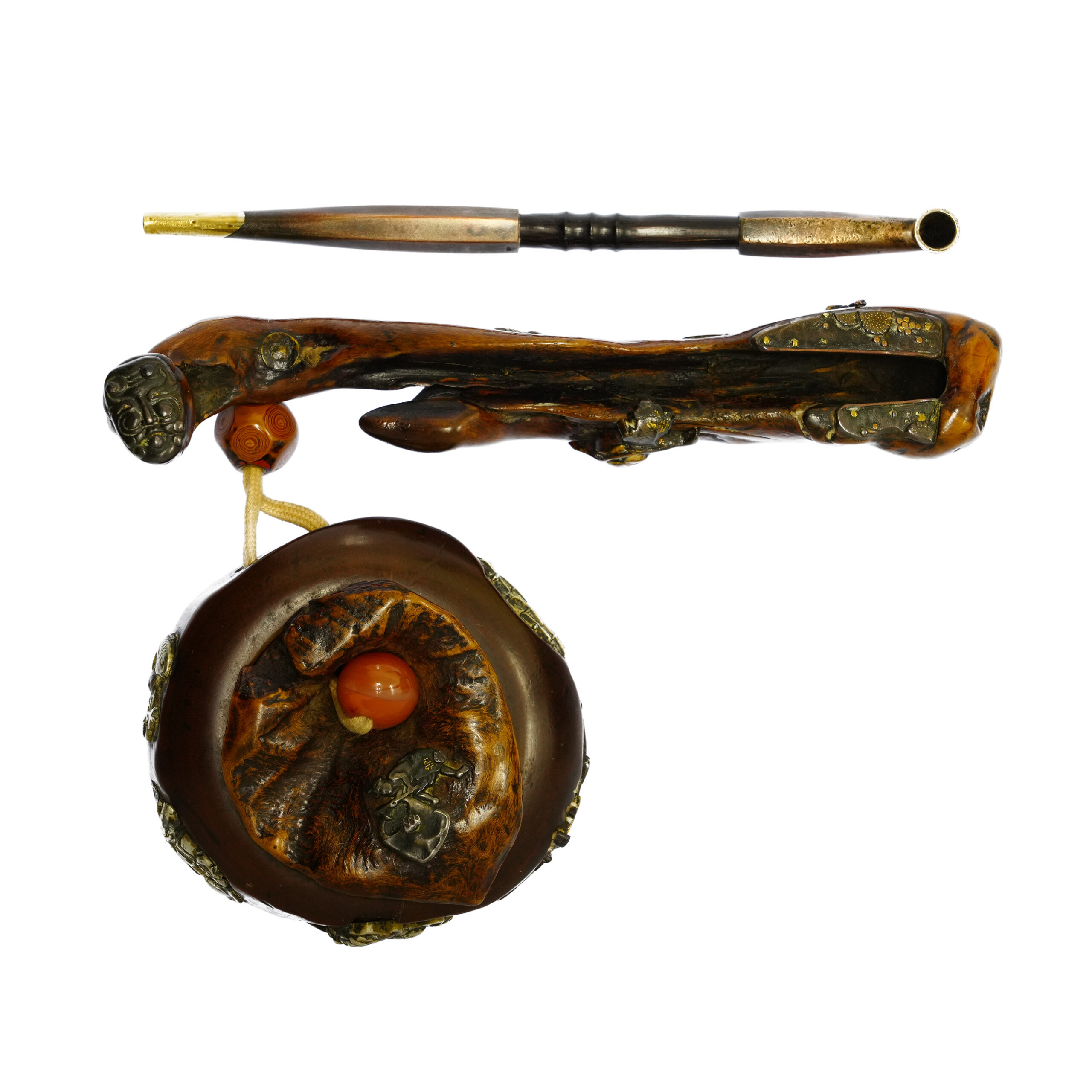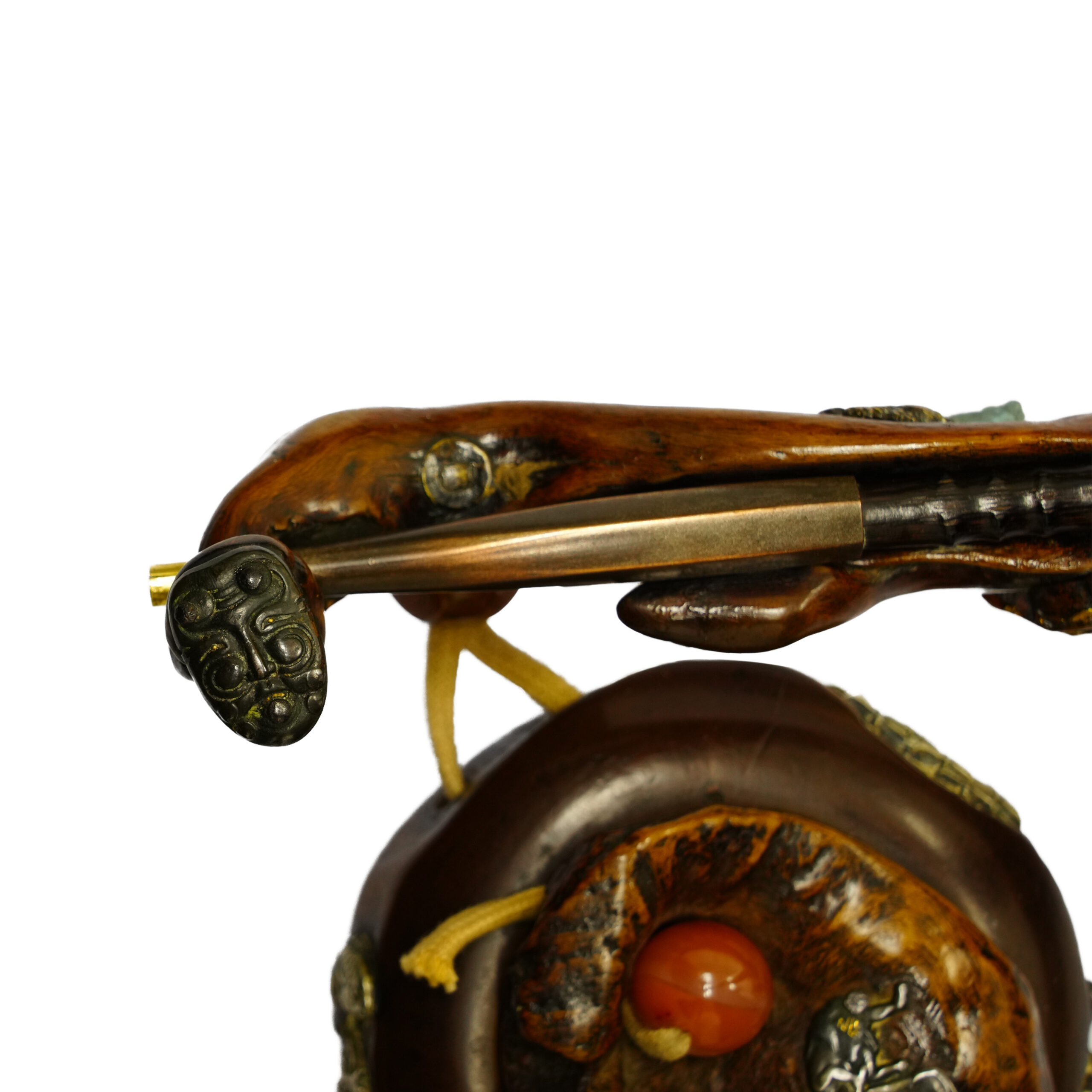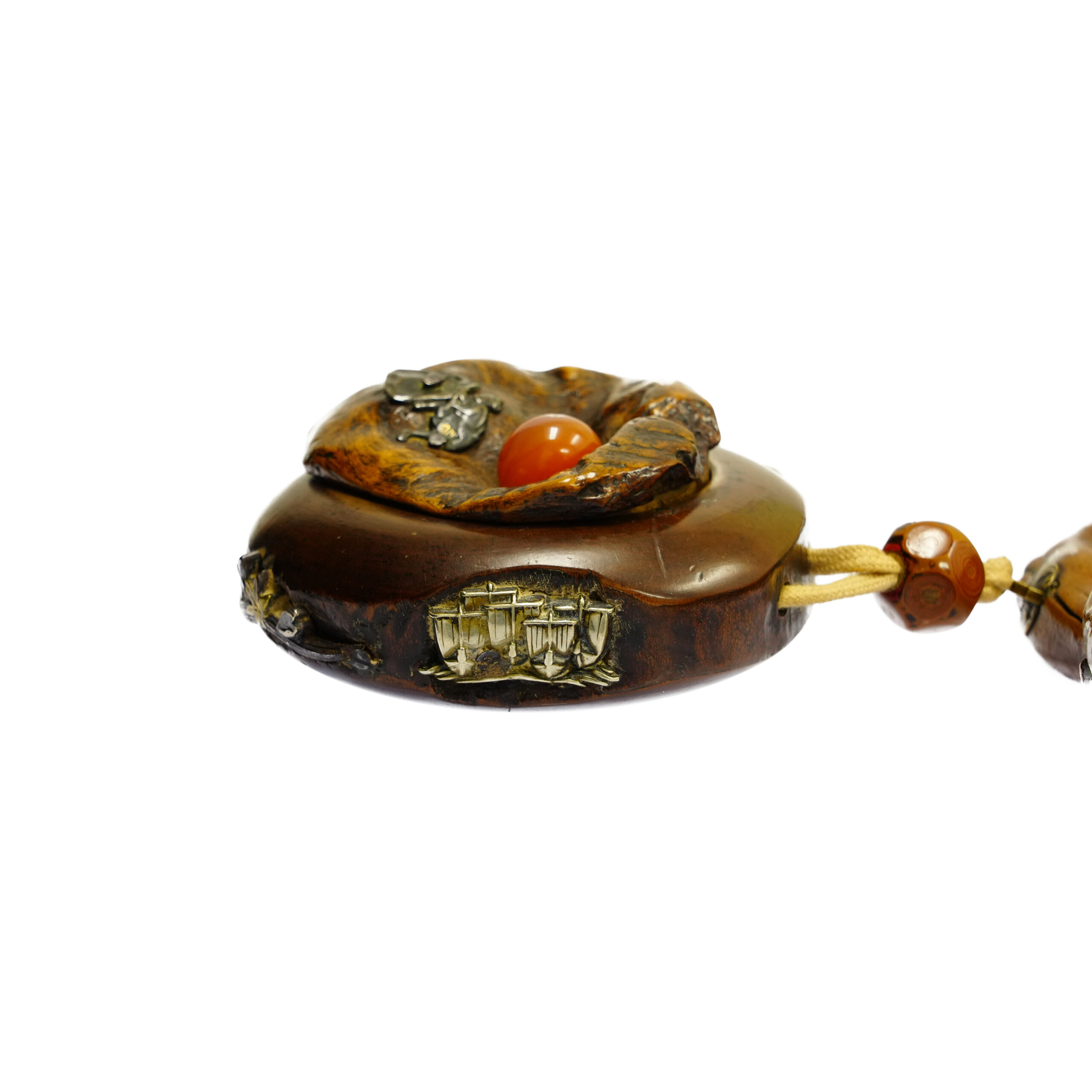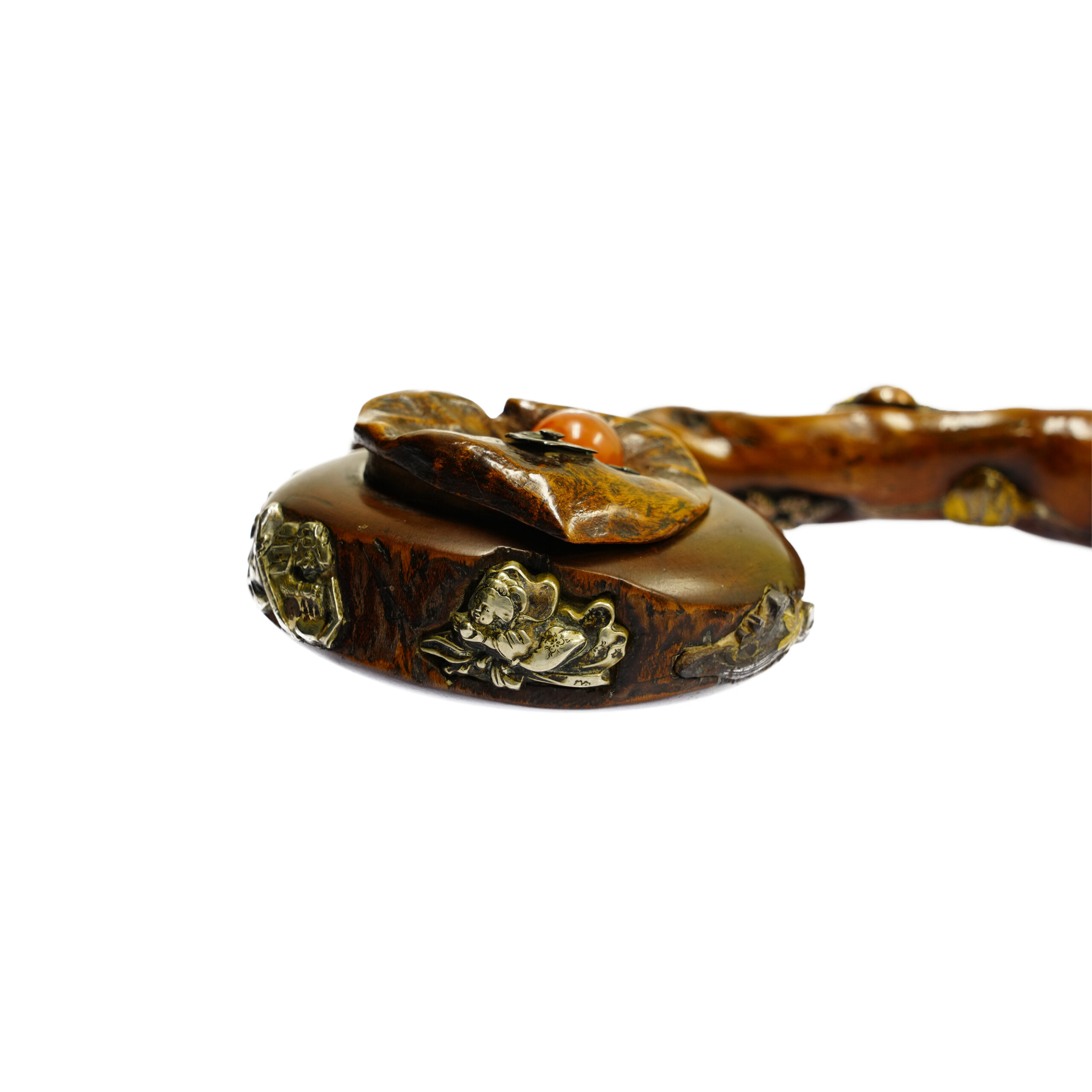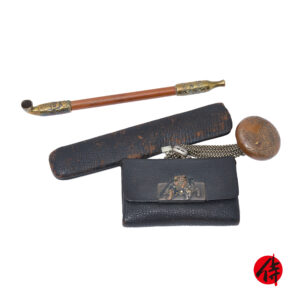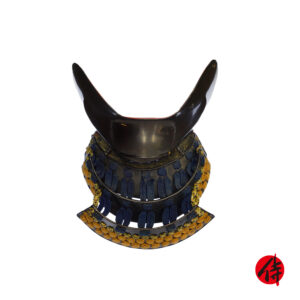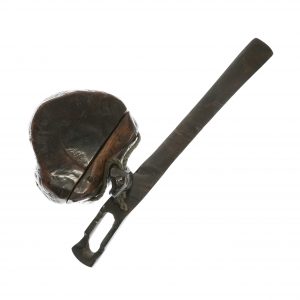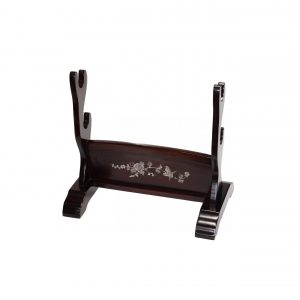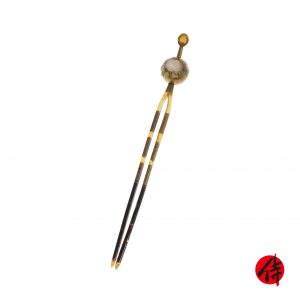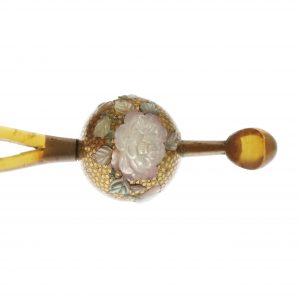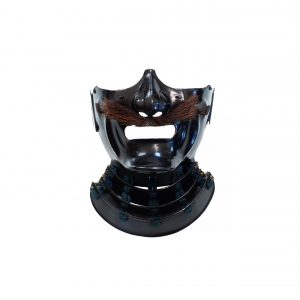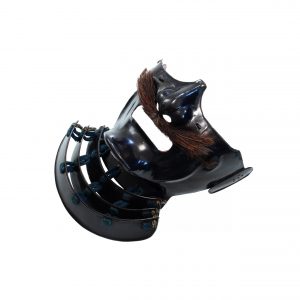Description
This set item includes a Tabaco Ire (たばこ入れ) and a Kiseru (きせる/煙管). Tabaco Ire is a container to store chopped tobacco. It was considered elegant to wrap chopped tobacco in a white paper in the early Edo period. But people who were engaged in outdoor works tied it to a handmade purse and hung it on their waist. In addition, some people remodeled and used the Douran (胴乱, a case to store valuables or gunpowder). This way, Tabaco Ire gradually spread among ordinary people and reached the upper class. Various types of Tabaco Ires were made; Sage-Tabaco Ire (提げたばこ入れ, hang from the waist) and Kaichu-Tabaco Ire (懐中たばこ入れ, put inside of Kimono) are the typical styles. It is said the latter type was appreciated, especially Samurais and ladies.
Kiseru is a type of smoking equipment for chopped tobacco, and it looks similar to a pipe. Before cigarettes became the primary current in Japan, it was the most common smoking method. It consists of the following parts: Gankubi (雁首), Rau/Rao (羅宇), and Suikuchi (吸口). There is a Hizara (火皿) at the tip of Gankubi. Hizara is the part where you put the chopped tobacco and ignite it. Gankubi is the head part of a Kiseru, excluding Hizara. Rau (also called Rao) is a tube through which cigarette smoke passes. Suikuchi is a mouthpiece. Gankubi, Hizara, and Suikuchi are usually made of metal to give durability. However, Rau/Rao part is often made from bamboo, and ebony was sometimes used for luxury Kiserus. On the other hand, there are also Kiserus made from metal. Gold, silver, copper, iron, tin, and zinc were used.
Regarding the design of the Tabako Ire and the Kiseru, they are filled with a lot of auspicious motifs. We would like to focus on some of them.
On the side of this Tabako Ire, you would find a figure of maples (紅葉, Momiji) flowing over water. According to a theory, this plant motif represents longevity. Maple leaves change their colors from green to yellow, orange, or red. The fall foliage is one of the charms of autumn. Due to this behavior of the color, this design represents someone who knows how to get along in the world and be happy. The pattern that depicts maple leaves run into the water is called Ryusui Momiji Mon (流水紅葉文).
Also, a jumping fish, which looks like a sea bream (鯛, Tai), is depicted. Sea bream is a long-lived fish and has become a symbol of longevity. In Japan, tai is also widely recognized as a symbol of congratulations. It is highly nutritious, and its red and white body color is considered auspicious. Especially, sea bream with its tail and head have been used for celebratory occasions since ancient times. The reason for this is that it is considered to be a good luck charm, meaning “to do one thing from beginning to end,” since it is from head to tail. In addition, the word “medetai,” which is pronounced the same way as “tai” (sea bream), means congratulations. In addition, Ebisu-sama, one of the Seven Gods of Good Fortune, holds a sea bream.
In addition, we assume the goddess-like figure dressed in a gorgeous Chinese-style costume might be Kisshoten (吉祥天). The Kisshoten originated from the Hindu goddess Lakshmi, and after being adopted into Buddhism, she came to be worshipped as a deity who bestowed beauty and good fortune, wealth and prosperity, property and wisdom. The Dharma tool held by Kisshoten is called Nyoi Hoju (如意宝珠), which is believed to produce treasures at will.
The Kiseru container is fashionably designed to look like a thick tree branch. The case also has several auspicious designs carved into it.
Firstly, grapes (葡萄, Budou) with a squirrel (栗鼠, Risu) are depicted. A theory says the grape pattern represents fertility, good health, and longevity. People treat this motif as an auspicious design. In Japanese, there is the word Budou (武道) which means martial arts. As Budou (葡萄, grape) has the same pronunciation of this word, it is considered that grape pattern shares some underlying ideas with Bushido (武士道, Japanese chivalry). That is why many Samurai appreciated the grape motif. Especially the combination of grape and squirrel patterns was widespread. The squirrel is a familiar animal to people since ancient times. According to a theory, this motif was brought to Japan in the Muromachi period (1336-1573). The Budou Risu (葡萄栗鼠, combination of squirrel and grape) pattern became famous and started to be applied to porcelains or sculptures. Since squirrels resemble mice that is a fertile animal, people regarded squirrels as the symbol of the prosperity of descendants.
It also depicts a castle-shaped building with the word “Ryugu (竜宮)” written on it. This is called Ryugu or Ryugu Jo (竜宮城, Ryugu Castle) and refers to a palace or world believed to exist in the sea. It appears in Chinese and Japanese legends concerning sea gods, who are said to be the masters of their palaces and to give treasures as gifts to those who visit their palaces. In Japan, the palace appears in a very famous and well-known folktale called “Urashima Taro.” The story is about a boy named Urashima Taro who saved a turtle from being bullied by children, and the turtle, in return, took Urashima Taro to the Ryugu Jo. He was treated well there, had a good time not noticing the time passing, and returned home with a souvenir box called Tamate bako (玉手箱). When opening the box, however, he suddenly turned into an old man. The story of “Urashima Taro” was also written in Otogi-Zoshi (御伽草子), a Japanese collection of short stories written during the Muromachi – the early Edo period (around 14 – 17th century), where the ending of his becoming an old man was not seen as tragic, but as a symbol of longevity and immortality in the end.
Other than the motifs mentioned above, this Kiseru and Tabako Ire are decorated with many other interesting motifs that are fun to look at.
*As this item is an antique, please check each photo and ensure its condition.


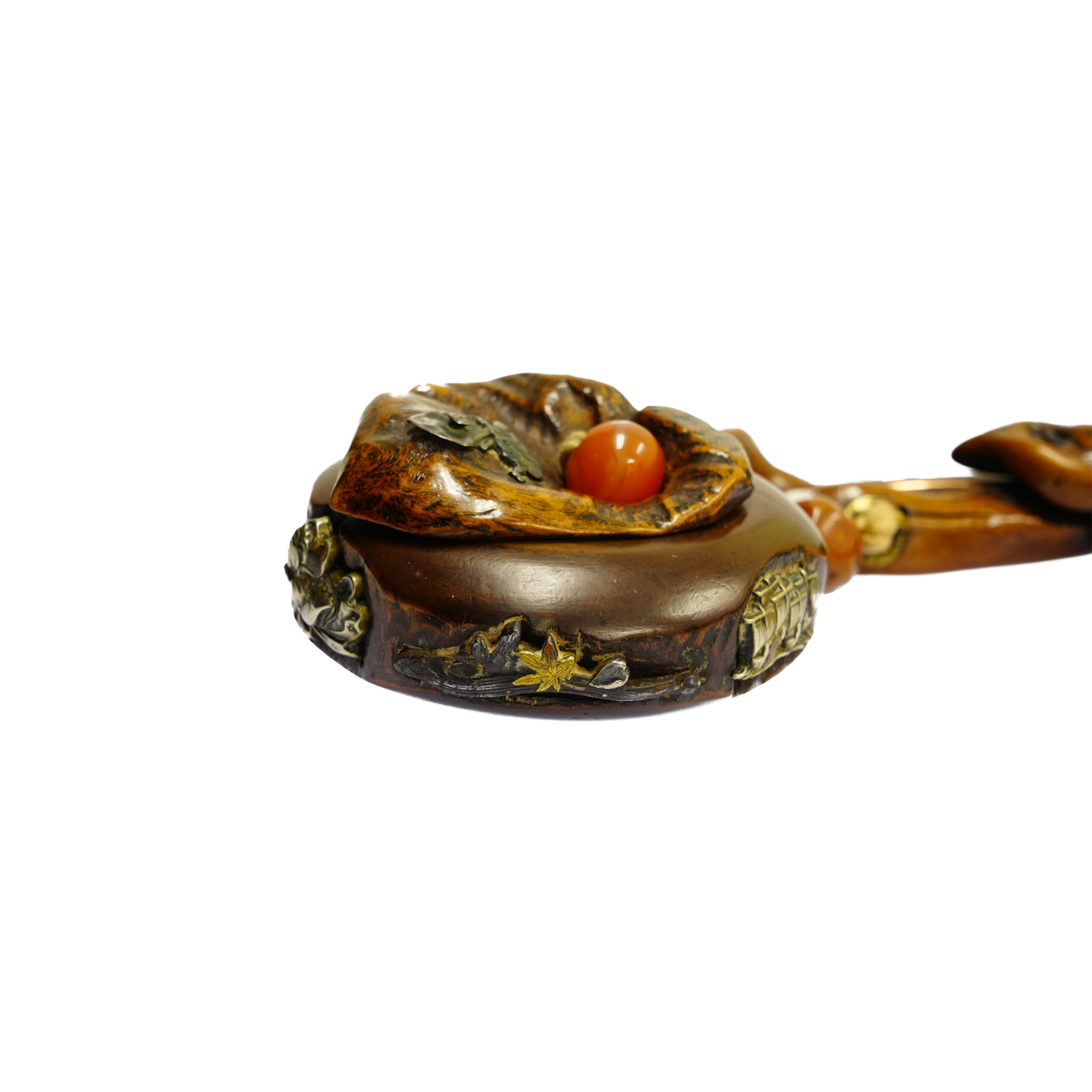
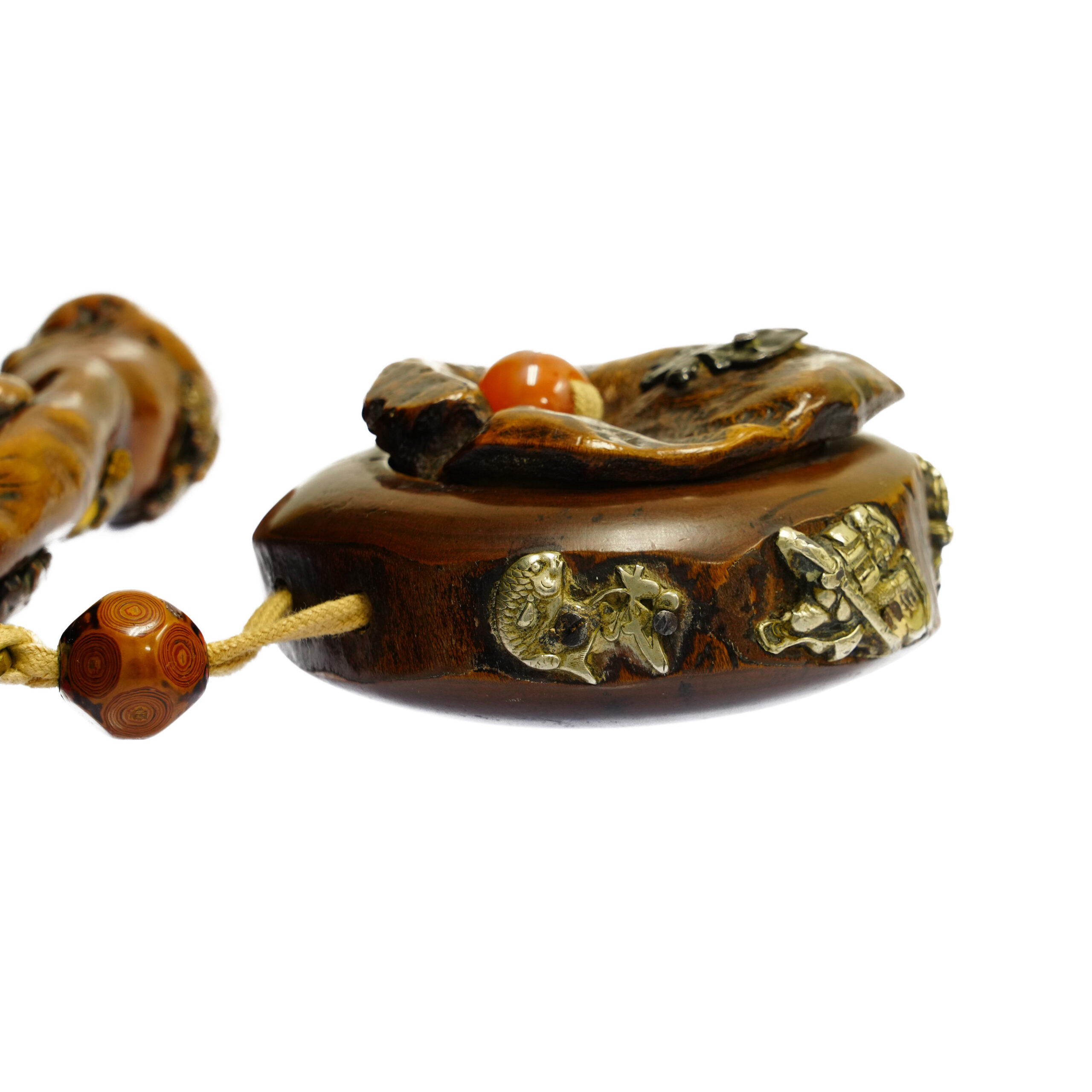

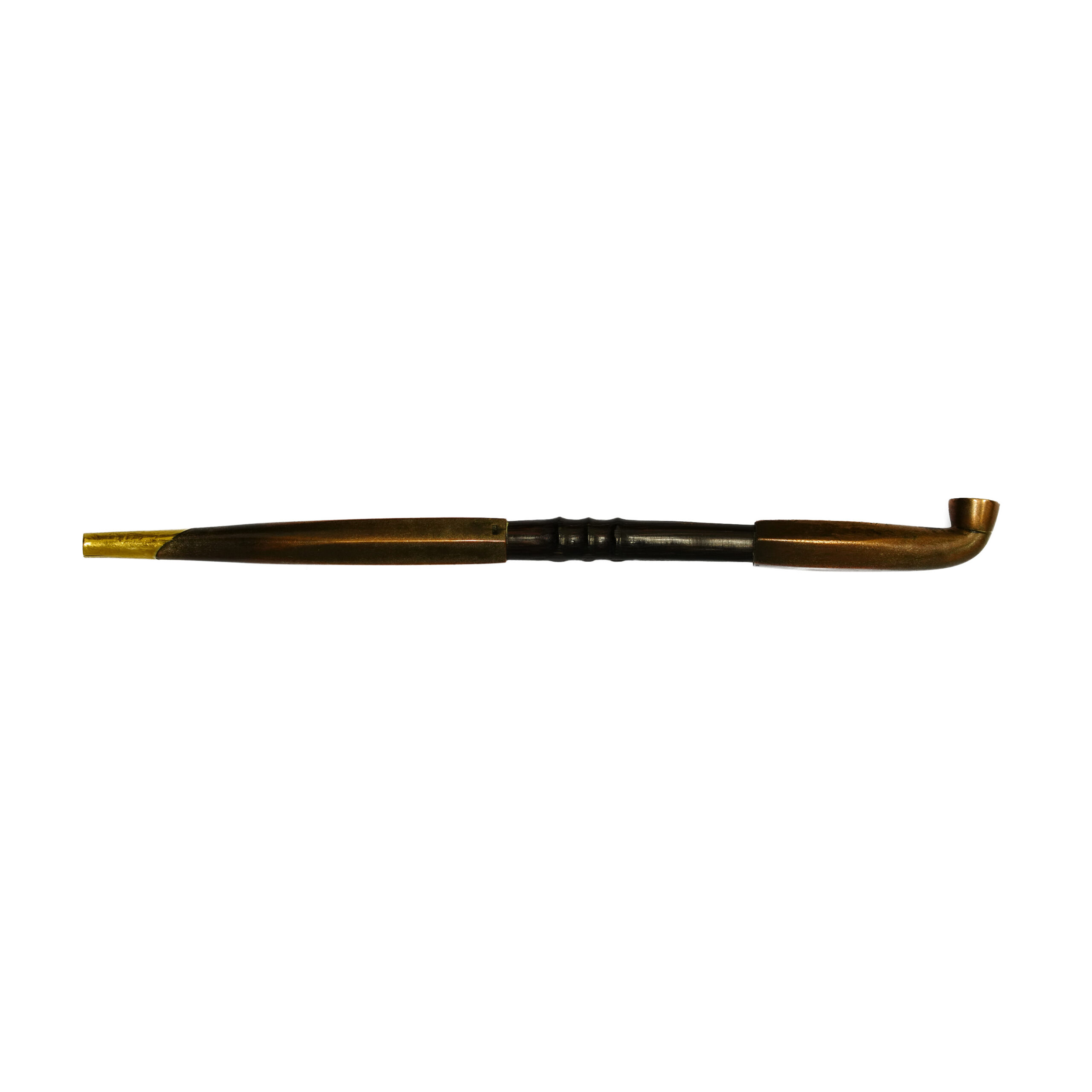
【About us】
Samurai Museum is located in Tokyo, Japan, exhibiting antique artifacts related to the Samurai history. Samurai Museum Shop is the place for those who are interested in Japanese culture and craftsmanship. We deal with antique Samurai swords/armor, traditional crafts made in Japan and so on.
【Payment method】
We accept payment through Stripe (Credit card), PayPal, Apple Pay or ChromePay, all of which are secure payment methods. Also, you don’t need to make an account on Stripe for the checkout. If you prefer other payment method, please contact us. You may either pay in JPY, USD, AUD, CAD, EUR, CHF or GBP. The price is set in Japanese Yen. Prices in other currencies are automatically calculated based on the latest exchange rate.

【Shipping duration】
We normally ship via EMS (Express Mail Service) provided by Japan Post. It usually takes at least 5-14 days to deliver the package after you place an order.
We offer Free International Shipping as long as we can ship your order by EMS. If you prefer other shipping carriers, please contact us.
We will inform you of the order’s tracking number via email. Please make sure you fill out your valid email address correctly.
*If you like to make sure if EMS shipping is available to your country, please contact us.

【How to make sure the condition】
Please keep in mind that what you are going to purchase is an antique item. We uploaded high resolution photos for you to check its condition thoroughly. If you like to see more photos with different angles, please feel free to contact us. We will be happy to send them to you so that you can make informed decision.
It is essential for us to know that you are happy with your choice of antique item and we are prepared to use the best of our ability to serve you.
Would you like see some more antique items for sale? Please check the link below. We hope you can find your favorite Tsuba.
https://www.samuraimuseum.jp/shop/product-category/antique/


